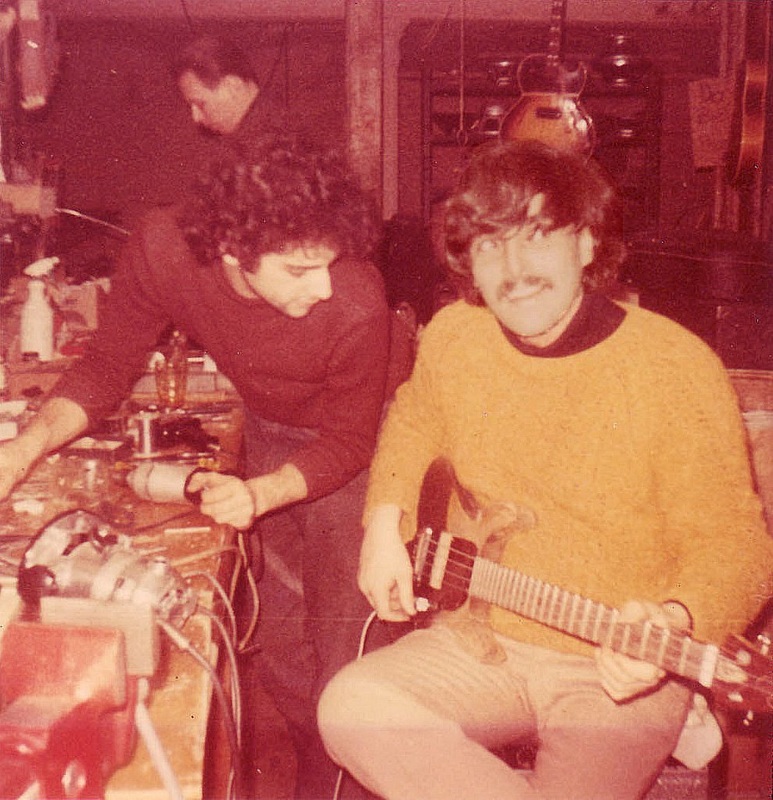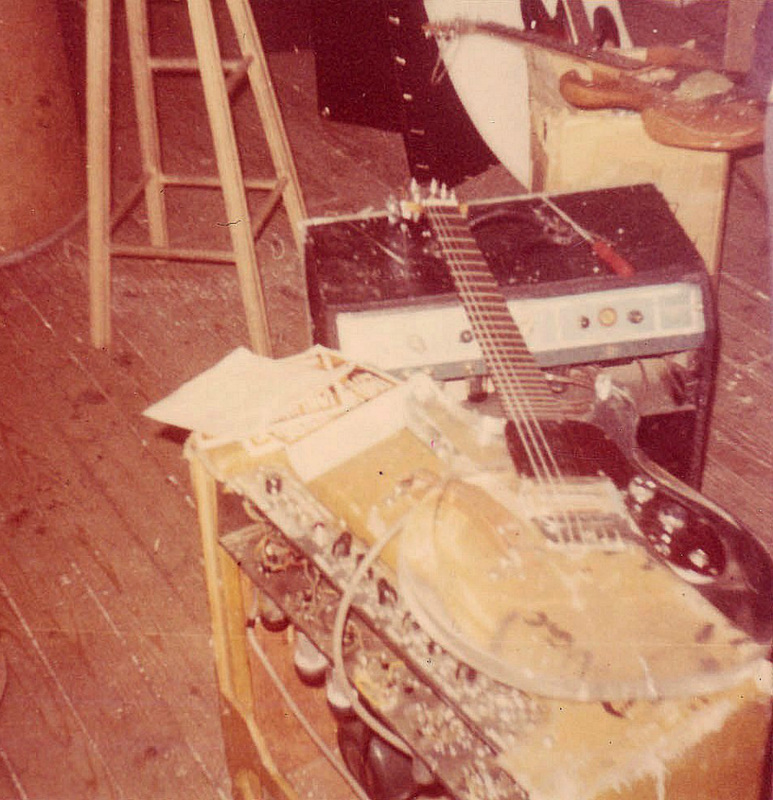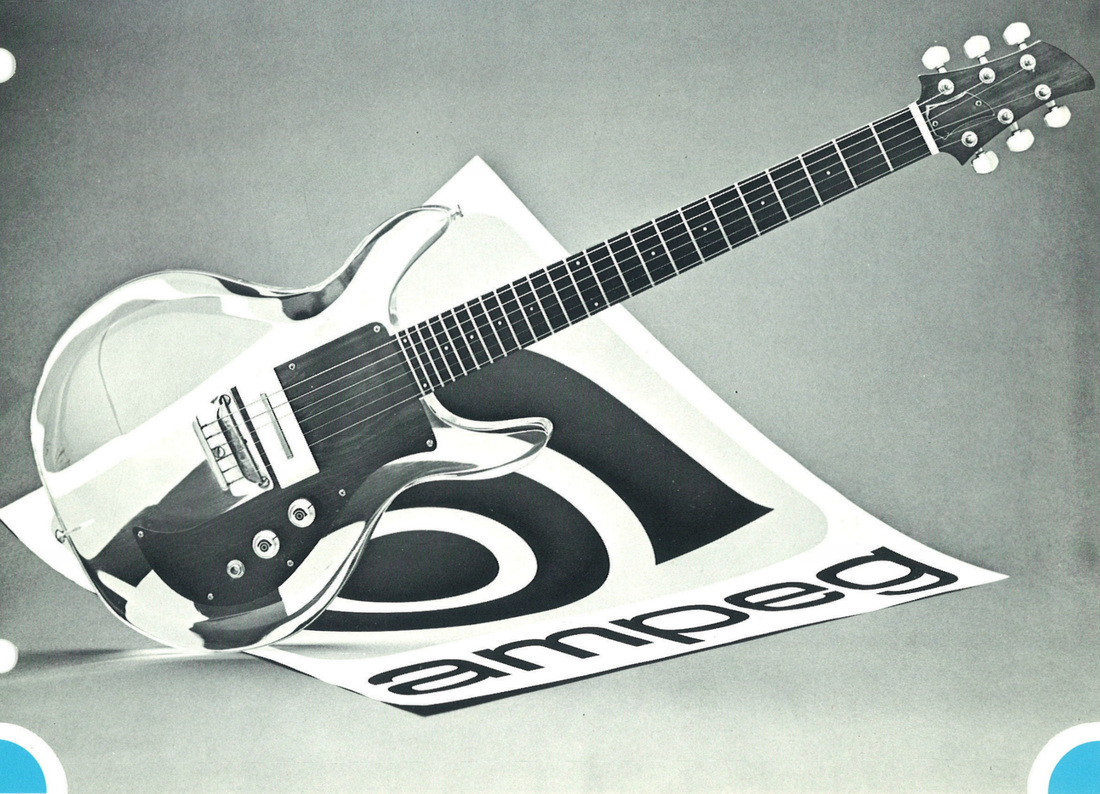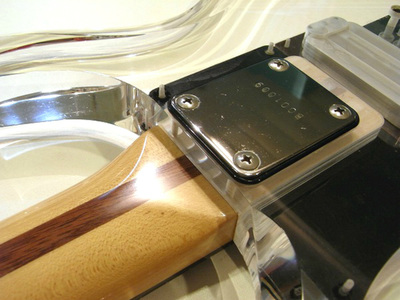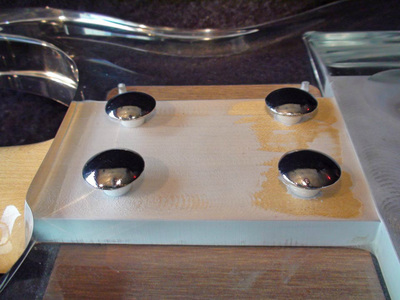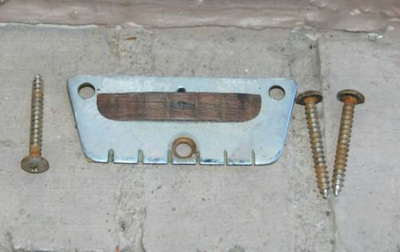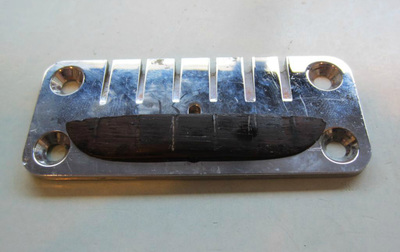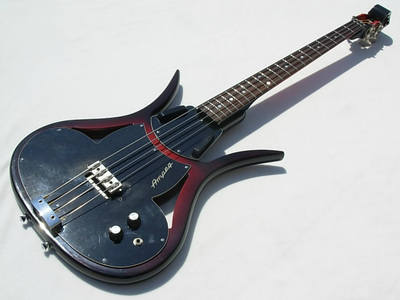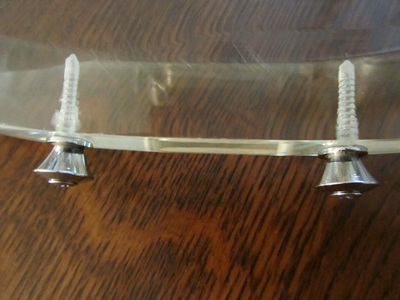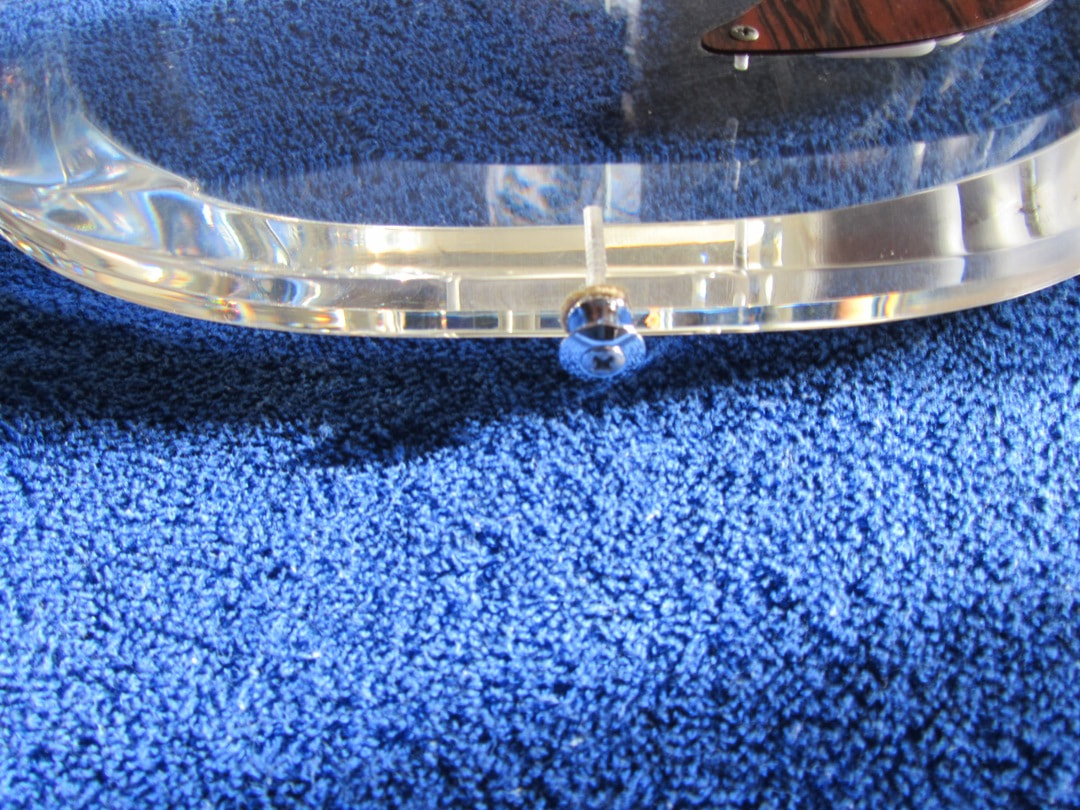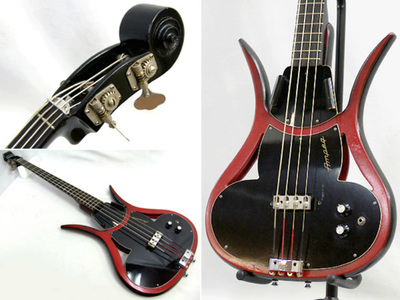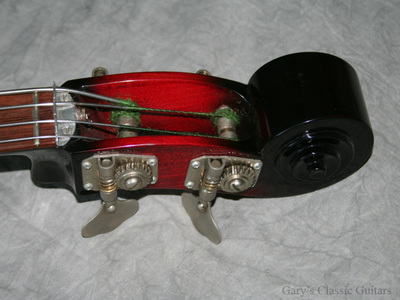Dan Armstrong FAQ's
How many Dan Armstrong prototypes were built?
Although we have yet to come across any instruments that could be described as a prototype, it is likely that Ampeg constructed at least a few instruments before starting formal production in 1969. Prototypes fall into two categories - those made by Armstrong/Umanov in New York, and any pre-production instruments that Ampeg built at the Linden, NJ factory as it finalized the specs and manufacturing processes.
The first two prototypes (one guitar and one bass) seem to be well-documented and were hand-built by a young Matt Umanov, who took a series of rough sketches and ideas from Dan Armstrong and turned them into working instruments. Here's how Matt described it...
Although we have yet to come across any instruments that could be described as a prototype, it is likely that Ampeg constructed at least a few instruments before starting formal production in 1969. Prototypes fall into two categories - those made by Armstrong/Umanov in New York, and any pre-production instruments that Ampeg built at the Linden, NJ factory as it finalized the specs and manufacturing processes.
The first two prototypes (one guitar and one bass) seem to be well-documented and were hand-built by a young Matt Umanov, who took a series of rough sketches and ideas from Dan Armstrong and turned them into working instruments. Here's how Matt described it...
|
“As many of you may know, I hand-built the original prototype guitar and bass for Danny at his request back in 1967-8 or so, from a set of rough paper drawings (which I still have), and a whole lot of talking between us. Danny had come up with the idea of a Plexiglass-bodied electric, and as he did with all of his brilliant ideas (there was an astounding number of them), immediately got others to do the working out of details for him. So…it was up to me, as a 20-year-old, to come up with bevels on the body, a peghead design, neck shape and inlay, how to attach the neck, way more. I did quite a creditable job if I do say so myself, making both instruments in my own little repair/restoration shop, long before I ever had a store."
"They [then] went to Ampeg as instruments to copy in production; no one knows whatever happened to those two originals, probably cut and modified to death for experimentation.” - Matt Umanov, 2015 Above left, Matt Umanov and Dan Armstrong check out progress on the DA prototype bass. Above right, the prototype guitar sitting on what looks like a Fender tweed amp. Note the single strap pin on the bottom (later changed by Ampeg to a dual-pin design), and what looks like a Danelectro bridge. Photos courtesy Matt Umanov, all rights reserved.
Above - prototype guitar as shown in an Ampeg pre-marketing brochure. Note that the pickguard is much closer to the final version, but the Danelectro bridge, single strap button, and fixed pickup design have so far been retained. Either this is the original Umanov-crafted guitar with a revised pickguard, or Ampeg had already made an exact copy of the Umanov instrument as it geared up for retail production.
|
So the history up to this point seems fairly clear. Dan Armstrong came up with the basic design of the instrument and handed off the specs to Matt Umanov who refined the concept and hand-built the first two prototypes in 1968. The original prototypes were then delivered to Ampeg, and something like a year later the first production guitars were shipped to retailers.
The next part of the story is pure speculation on my part. How did Ampeg take two hand-built prototypes and figure out how to mass-produce the necks and bodies for actual production? How many additional prototypes were built by Ampeg to validate the concept? Although Matt Umanov's view is that his two original prototypes might have been modified by Ampeg during the re-engineering phase, it would have been more sensible for Ampeg to keep these instruments intact as valuable examples of what the final product needed to look like.
From a development standpoint, we think Ampeg must have made a small number of its own prototypes before beginning formal production for retail in mid-1969. How many prototypes? There's really no way of knowing, but it seems likely that a handful of guitars and another handful of basses were produced and tested in the development phase. Although Ampeg reserved the first 100 serial numbers for pre-production instruments, it just doesn't seem likely that anything near that number were ever produced. Keep in mind too that Ampeg had been building its line of Baby Basses and Horizontal Basses (see below) for about five years, and was experienced in small-scale production. The new Dan Armstrong instruments were probably no different. Ampeg started with the two Umanov instruments, probably built several prototypes of its own to validate the manufacturing process, and then started actual production. The first retail instruments were probably not much more than prototypes themselves and subject to further refinement. This is clearly seen in the bass, where early instruments used an awkward metal plate to help secure the pickup. But within about 100 instruments, the plate was eliminated and all subsequent pickups were held in place by the familiar 6-32 thumbscrew from the back.
There were also a number of changes between the original Umanov prototypes and the final production guitars. The biggest design change would have been the sloping pickup channel milled into the plexiglas body, that allows for pickup changes without taking off the strings. Such a channel would have been difficult to create with the type of hand-held router that Umanov used to build the originals, but it would have been relatively easy to do with a commercial milling machine.
Here's a few other things Ampeg had to figure out for production:
* The need to create a set of jigs/patterns/templates so that the body blanks came out exactly the same every time. Neck joints are consistently tight on Dan Armstrong guitars.
* A way to quickly swap pickups in/out of the body. This necessitated not only creating a sloping channel in the body, but also the system of using male/female banana jacks to create an electrical connection.
* Finding seasoned maple for the neck blanks and Brazilian rosewood for the fingerboards. The quality of the wood used in production seems to have been very high, with most necks remaining stable over time.
The next part of the story is pure speculation on my part. How did Ampeg take two hand-built prototypes and figure out how to mass-produce the necks and bodies for actual production? How many additional prototypes were built by Ampeg to validate the concept? Although Matt Umanov's view is that his two original prototypes might have been modified by Ampeg during the re-engineering phase, it would have been more sensible for Ampeg to keep these instruments intact as valuable examples of what the final product needed to look like.
From a development standpoint, we think Ampeg must have made a small number of its own prototypes before beginning formal production for retail in mid-1969. How many prototypes? There's really no way of knowing, but it seems likely that a handful of guitars and another handful of basses were produced and tested in the development phase. Although Ampeg reserved the first 100 serial numbers for pre-production instruments, it just doesn't seem likely that anything near that number were ever produced. Keep in mind too that Ampeg had been building its line of Baby Basses and Horizontal Basses (see below) for about five years, and was experienced in small-scale production. The new Dan Armstrong instruments were probably no different. Ampeg started with the two Umanov instruments, probably built several prototypes of its own to validate the manufacturing process, and then started actual production. The first retail instruments were probably not much more than prototypes themselves and subject to further refinement. This is clearly seen in the bass, where early instruments used an awkward metal plate to help secure the pickup. But within about 100 instruments, the plate was eliminated and all subsequent pickups were held in place by the familiar 6-32 thumbscrew from the back.
There were also a number of changes between the original Umanov prototypes and the final production guitars. The biggest design change would have been the sloping pickup channel milled into the plexiglas body, that allows for pickup changes without taking off the strings. Such a channel would have been difficult to create with the type of hand-held router that Umanov used to build the originals, but it would have been relatively easy to do with a commercial milling machine.
Here's a few other things Ampeg had to figure out for production:
* The need to create a set of jigs/patterns/templates so that the body blanks came out exactly the same every time. Neck joints are consistently tight on Dan Armstrong guitars.
* A way to quickly swap pickups in/out of the body. This necessitated not only creating a sloping channel in the body, but also the system of using male/female banana jacks to create an electrical connection.
* Finding seasoned maple for the neck blanks and Brazilian rosewood for the fingerboards. The quality of the wood used in production seems to have been very high, with most necks remaining stable over time.
|
Deciding on a torque-spec for the neck bolts. This would have been a critical element because over-tightening would have produced potential cracking issues (and related warranty costs) out in the field. The final Dan Armstrong bolt-on neck design is unusual in that it does not utilize a neck plate to distribute the stress created at the bolt heads. Rather, it relies on the inherent strength of the plexiglas body to resist cracking.
At near right is a Greco copy which uses a conventional neck plate and four wood screws to attach the neck, while at right is the Ampeg Dan Armstrong version. Since there's a lot of machining work involved in producing each of the bodies (especially in pre-CNC days), all the more reason to test the torque spec (probably to the failure point) during the pre-production phase. |
|
Enhancing the bridge design. The lefthand photo shows a Danelectro saddle and bridge plate, while the far right photo shows the Dan Armstrong bridge. While the DA bridge is clearly based on the Danelectro design, there are just enough changes (rectangular plate, deeper string grooves, thicker gauge of metal, uses four mounting screws), that Ampeg could claim it as its own.
|
|
Strap Button Design. During the initial development stage, Ampeg changed to a dual strap button design on the bottom of the guitar versus the single strap button of the Umanov prototype. While it seems novel, Ampeg had actually been using a dual-button design for years on its series of Scroll basses, as seen in the photo at near right. The placement of the Dan Armstrong strap buttons (shown at far right on A166D) is virtually identical.
Why two strap buttons? Certainly the use of two strap buttons makes the instrument much more stable, and guards against falling over when a musician might lean the instrument against an amp during a break. Anything that contributed to less damage would help with warranty costs down the road. Having two strap buttons also allows the player to quickly adjust how the guitar sits, without necessarily having to adjust the guitar strap. And lastly, the dual button design just looks cool, and is a nice complement to the other features thought of by Armstrong and Umanov. Shown at right is a notable exception in strap button placement. A2683D has only a single strap pin on the bottom and obviously came this way from the factory. So is this a leftover prototype body that eventually found its way into production, or was this guitar a special order or employee instrument? |
|
In many ways, Ampeg turned out to be an ideal partner to develop and produce the Dan Armstrong guitar. For starters, it had already been manufacturing unusual and technically complicated basses for several years.* This included the 'Baby Bass' (introduced in 1962), which was a fiberglas-bodied and electrified version of the traditional upright bass. Ampeg also produced a series of more-conventional basses (generally known as the 'scroll' bases due to their headstock design), which were in production from 1966 to 1967 (see pictures below for these various basses). Thus, Ampeg was already familiar with bolt-on necks, complicated body shapes, advanced pickup design, and small-scale batch production well before it started producing the Dan Armstrong guitars and basses in 1969. For Ampeg, a completely new plexiglas-bodied guitar design accompanied by plug-in pickups was just another challenging project for its experienced manufacturing staff to solve. Now over fifty years later, the quality of Ampeg's engineering and production capabilities continues to shine through in the legacy of these instruments.
* Much of the information regarding Ampeg's Baby Bass and Horizontal Basses comes from 'Ampeg: The Story Behind the Sound' by Gregg Hopkins & Bill Moore, 1999, Hal Leonard Corporation. See pages 101 - 104 for a complete history of the Baby Bass, and pages 122-124 for the Horizontal Basses.
